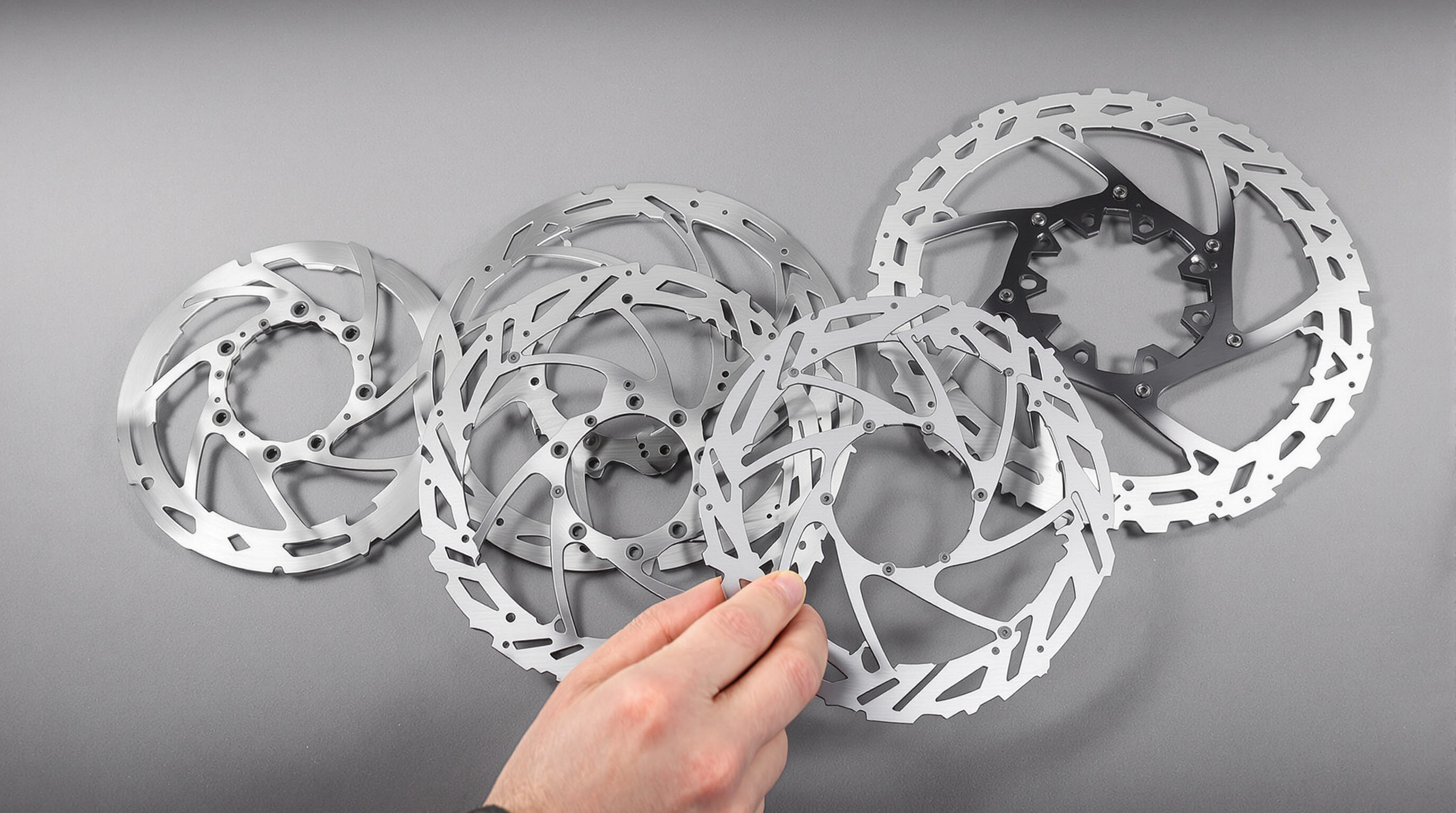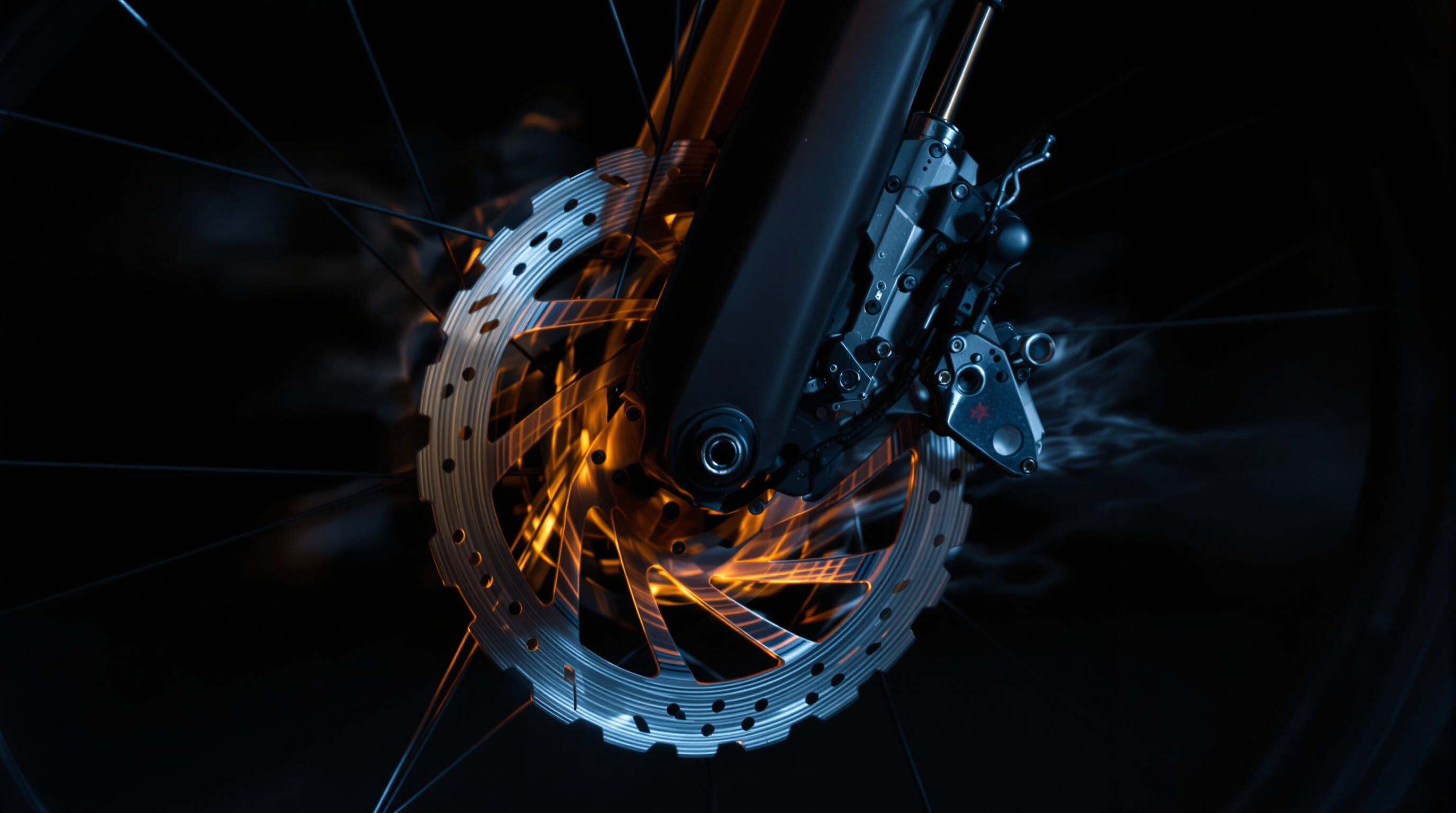The extra weight of e-bikes compared to regular bikes is pretty substantial too, usually around 20 to 30 percent heavier because of all those motors and battery packs inside. When these heavier machines hit speeds between 20 and 28 mph (which translates to roughly 32 to 45 km/h), stopping becomes much harder work. For instance, coming to a halt at 25 mph actually needs about double what it would take at just 15 mph according to physics principles related to motion energy calculations (something like F equals half mass times velocity squared). Because of this increased demand on brakes, manufacturers need to design systems capable of handling greater heat buildup and physical stress while still keeping riders safe on the road.
Electric assistance creates frequent high-load scenarios, especially during descents or sudden stops in traffic.
This sustained thermal stress degrades modulation and component integrity within minutes.
Conventional brakes are designed for lighter loads (<45 lb) and intermittent use, making them unsuitable for e-bike demands. Key failure points include:
Manufacturers warn against using non-e-bike-rated components. Purpose-built upgrades address these issues with enhanced thermal management and robust materials.

Larger rotors increase leverage and torque at the hub, improving stopping power. A 203mm rotor delivers 27% more force than a 160mm rotor under identical conditions (SAE Brake System Study 2023). This mechanical advantage is essential for e-bikes, where total weight often exceeds 250 lbs—65% more than traditional bikes.
E-bikes typically use three rotor sizes:
Steep terrain demands 200mm rotors to limit brake fade to under 1.5% during extended descents. Urban riders benefit from 180mm rotors, which balance power and weight. Thermal imaging shows 203mm rotors run 112°F cooler than 160mm rotors in stop-and-go traffic (Urban Mobility Lab 2024).
Most e-bike frames support up to 203mm rotors; exceeding limits risks fork fatigue. Post-mount adapters allow upgrades from 160mm to 203mm without frame modification, though 70% require professional installation to avoid caliper misalignment (National Bicycle Institute 2024).
Optimal rotor performance depends on attachment method, thermal design, and frame compatibility.
6-bolt rotors use hex screws for universal compatibility and easy replacement but add rotational weight. Centerlock systems feature splined hubs and lock rings for tool-free changes and better concentricity, though they require specific hubs. Lightweight conversion adapters (<20g) allow flexibility between standards, as confirmed by 2023 drivetrain efficiency studies.
Most bikes with International Standard mounts need some kind of adapter when pairing them with newer caliper models on older frame designs. The post mount system, which threads right into the frame itself, has become pretty standard across electric mountain bikes these days. What makes this setup popular is how easy it is to upgrade rotors by simply adding spacers for that extra 20mm clearance. Flat mount options definitely win points for being lighter weight, though riders might find themselves restricted in terms of rotor sizes unless they invest in special brackets. Looking at recent market research, around seven out of ten bike frames can handle rotor sizes between 180 and 203mm when using appropriate adapters, giving cyclists plenty of flexibility depending on their riding conditions and preferences.
City riders love organic pads because they feel smooth when braking and don't make much noise while riding around town. The downside? They tend to wear down about 40 percent quicker than sintered options when put through the rigors of electric bike riding according to some recent testing by Brake Performance Lab. Sintered metallic pads are basically copper and steel mixed together, which helps them handle heat better and keeps them performing consistently even during those long downhill stretches. These pads do come with tradeoffs though. They're definitely louder than organic ones, but that extra noise is worth it for folks who need something that lasts longer. Cargo bikes and mountain e-bikes especially benefit from this kind of pad since they often carry heavier loads or tackle rough terrain where brake longevity matters most.
Organic pads lose effectiveness in wet conditions, increasing stopping distances by 15–20%. Sintered pads retain 90% of dry-weather performance in rain due to their porous structure, which sheds water efficiently. However, they accelerate rotor wear by 25% compared to organic pads.
In hilly areas, organic pads last 300–500 miles, while sintered pads endure 800–1,200 miles. Riders seeking lower maintenance should consider sintered pads despite higher initial cost. Hybrid compounds from manufacturers like Shimano and SRAM now offer balanced modulation and wear resistance, gaining popularity among touring e-bike users.
Matching pads to rotors optimizes performance. Organic pads pair best with smooth rotors to reduce noise, while sintered pads excel with slotted or vented rotors that dissipate heat 30% faster. Modern rotors feature laser-cut patterns that minimize pad glazing—an e-bike-specific issue—extending pad life by 20% without sacrificing stopping power.

E-bikes generate more kinetic energy due to added weight (20–30 lbs) and higher speeds (up to 28 mph), making heat dissipation critical. Without effective thermal management, friction materials exceed safe operating temperatures during repeated stops or descents, leading to reduced braking power and accelerated wear—compromising safety.
Vented rotors use airflow between friction surfaces to enable convective cooling. Paired with sintered pads that remain effective up to 932°F, these systems handle severe thermal loads far better than organic alternatives. Geometric features like radial spider arms or crescent cutouts enhance airflow and reduce warping from thermal stress.
Controlled downhill tests show upgraded systems retain 92% of initial stopping power after sustained braking, while standard brakes suffer complete performance loss under the same conditions. Thermal imaging reveals hot spots forming within 25–30 seconds of aggressive braking without proper heat management.
Advanced solutions include finned rotors that increase surface area by 40% and multi-layer rotors with aluminum heat-dissipating cores. These are paired with directional airflow channels routed through fork crowns and frame stays, shifting brake system design toward holistic thermal management rather than friction alone.
 Hot News
Hot News
© Copyright 2024 Shenzhen New Image technology Co., Ltd All Rights Reserved Privacy policy